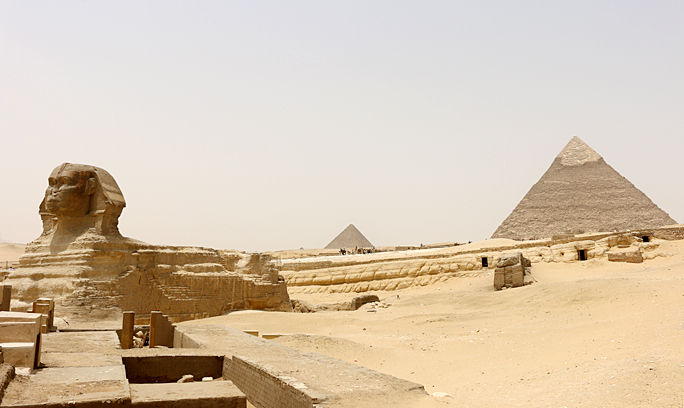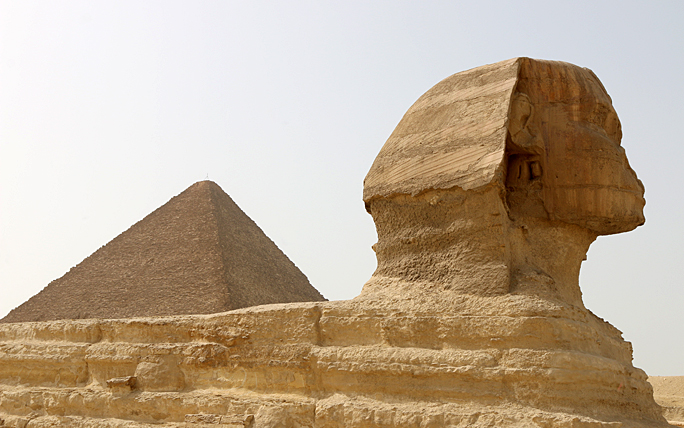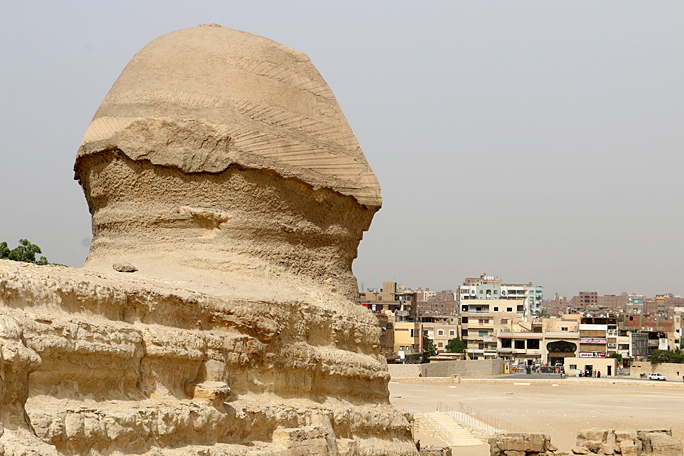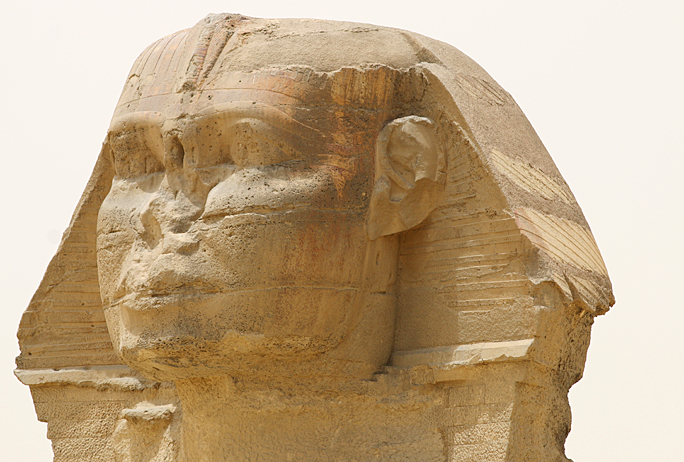Note: This article pertaining to Great Sphinx of Giza in Egypt: A Photographic Essay was originally published on Sunday, July 5, 2015 at 6:20 in the evening and has been updated.
It looks like he is a gentleman in waiting — waiting, that is, in the same spot for greater than 4,500 years.
The Great Sphinx of Giza — also known simply as the Sphinx, although there are many other sphinxes in Egypt — is the largest monolith statue in the world created out of limestone.
Great Sphinx of Giza in Egypt: A Photographic Essay

As the oldest known monumental sculpture which was carved directly out of the bedrock during the Fourth Dynasty sometime between 2613 BCE and 2494 BCE, it sits on the Giza Plateau, seemingly guarding the Pyramids of Giza behind it.

There are still many questions to be answered pertaining to this mysterious work of the ancient Egyptians. Why was it erected? By whom exactly was it built?

We may never know the answers to the myriad questions which surround what is arguably one of the most famous and recognized historic landmarks in the world; but we can certainly admire it — as well as all of the work which went into it.

The Great Sphinx of Giza is a monolith comprised of the head of a human being and the body of a lion, which is a symbol of strength.

It was carved from the bedrock of the plateau that also served as the quarry for the aforementioned pyramids and other historic monuments in the area.

The photograph above shows the walkway from the entrance to the Great Sphinx of Giza from the parking lot.

I have read by numerous accounts posted in various places on the Internet that the Great Sphinx of Giza is staring at a Pizza Hut.

Actually, the Great Sphinx of Giza was staring at a restaurant which combined a Pizza Hut and a Kentucky Fried Chicken.

I cannot imagine that the Great Sphinx of Giza is happy to be viewing the urban sprawl inching towards it over the years.

I seemed to have seen what I thought were the tracks of stone tears coming out of its eyes as a result of that sad site — especially as its nose was already broken at some point over the millennia.

No one knows the exact circumstances under which the nose of the Sphinx — which was approximately one meter wide — was broken off…

…but close inspection suggests a deliberate act using rods or chisels that were hammered into the area of the nose — one down from the bridge; and another beneath the nostril — before they were used to pry the nose off towards the south…

…which resulted in the nose remaining lost to this day.

The photograph above shows a close view of its right rear “foot” or “paw”…

…and the structure — similar to a “penalty box” of some sort in hockey — immediately behind its front “foot” or “paw” on its right side.

Hide the children — here is a close-up view of its rear end. Salacious!

The Great Sphinx of Giza measures:
- 73 meters or 240 feet long from paw to tail
- 20 meters or 66 feet high from the base to the top of the head
- 19 meters or 62 feet wide at its rear haunches

The Great Sphinx of Giza and the temple in front of it — which is called the Sphinx Temple — lie directly next to the valley temple of Khafre and the lower portion of the causeway, leading up to his mortuary temple and pyramid.

Unseen to visitors of the Sphinx are both a passage in its rump and a hole in the top of its head.

The monuments and pyramids of the Giza Plateau are managed by the Ministry of Tourism and Antiquities of Egypt.

In 2015, the cost of admission to see both the Pyramids of Giza and the Great Sphinx of Giza was 80 Egyptian pounds per person — or approximately $10.35. If you were a student, you were eligible to pay 40 Egyptian pounds — or approximately $5.18. The current prices in 2025 are listed below.

Final Boarding Call
You can stay as long as you like to admire the Great Sphinx of Giza — even into the night to view a sound and light show — along with the pyramids in the background. I left long before sunset to navigate the rental car through the living nightmare known as the outer Ring Road and I did not want to experience that at night. Additionally, I was departing for the long drive to Hurghada — a resort city by the Red Sea — the next morning.
Do not miss viewing both the Great Sphinx of Giza and the pyramids — they are both included as part of the same admission fee — if you find yourself in the Cairo metropolitan area. An extra fee is charged for visiting the inside of the Great Pyramid, Pyramid of Khafre, Pyramid of Menkaure, Tomb of Meresankh III, and Worker’s Cemetery.
Great Sphinx of Giza
Giza Plateau
Egypt
The hours of operation are between 7:00 in the morning and 5:00 in the afternoon daily. Last entry is at 4:00 in the afternoon daily.
The cost of admission to see both the Pyramids of Giza and the Great Sphinx of Giza is 700 Egyptian pounds per person — or approximately $14.18 in United States dollars. If you are a student, you are eligible to pay 350 Egyptian pounds — or approximately $7.09. Cars and taxi cabs are charged 25 Egyptian pounds — or approximately $0.51.
Private visits are available to see the Great Sphinx of Giza at an extra fee.
Toilet facilities are located near both entrances of the Giza Plateau.
All photographs ©2015 by Brian Cohen.

